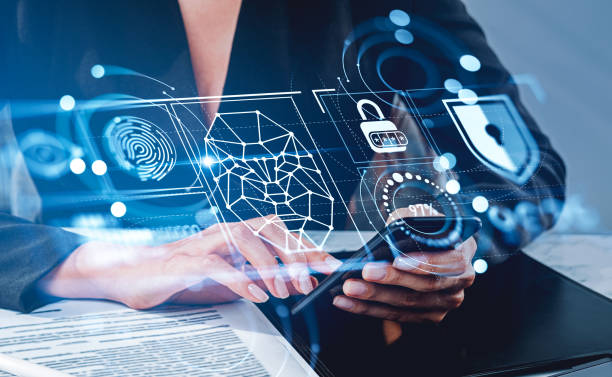The unborn In the ever- evolving geography of technology, inventions continuously review the way we interact with the world around us. One similar revolutionary development that has gained substantial attention and integration in recent times is Biometric Technology. This slice- edge field encompasses a different range of identification and authentication styles, counting on unique natural traits to corroborate and grant access. In this blog, we claw into the fascinating world of Biometric Technology, exploring its operations, benefits, and the eventuality it holds for shaping the future.
Understanding Biometric Technology
Biometric Technology leverages distinctive physiological or behavioral attributes to identify individualities directly. Unlike traditional styles similar as watchwords or Legs, biometrics offers a more secure and accessible approach to authentication. Normal biometric modalities incorporate fingerprints, facial acknowledgment, iris surveys, voice acknowledgment, and without a doubt DNA investigation. Each of these styles relies on the oneness of individual traits, making it extremely delicate for unauthorized access.
Operations of Biometric Technology
Security and Access Control
One of the primary operations of biometric technology is in enhancing security and access control systems. From securing sensitive government installations to unleashing smartphones, biometrics ensures that only authorized individualities gain access.
Fiscal Deals
Biometrics has made significant strides in the fiscal sector, furnishing a secure means of vindicating individualities during deals. point and facial recognition technologies are decreasingly used for authorizing payments and penetrating banking services.
Healthcare
In healthcare, biometric technology plays a pivotal part in patient identification, icing accurate and secure medical records. It aids in precluding fraud and medical identity theft while streamlining the healthcare delivery process.
Border Control and Immigration
numerous countries have espoused biometric systems at border crossings and immigration checkpoints to strengthen their security measures. Facial recognition and point scanning are generally employed to corroborate the individualities of trippers .
Pool operation
Businesses use biometrics for hand attendance shadowing, reducing the liability of time fraud. Unique biometric labels, similar as fingerprints, exclude the possibility of deputy attendance.
Benefits of Biometric Technology
Enhanced Security
Security compared to traditional authentication styles biometric systems give a advanced position of. The oneness of natural traits minimizes the threat of unauthorized access.

Convenience
Unlike watchwords or Legs that can be forgotten or lost, biometric data is essential to the existent. This offers a accessible and stoner-friendly system of authentication.
Delicacy and trustability
Biometric technology boasts high delicacy rates in relating individualities. This trustability is pivotal in operations where perfection is consummate, similar as felonious examinations or healthcare.
Fraud Prevention
The use of biometrics significantly reduces the threat of identity theft and fraud. Attempts to manipulate or replicate biometric data are grueling , adding an redundant subcaste of protection.
Streamlined Processes
Biometrics streamlines colorful processes, from penetrating secure installations to making fiscal deals. This effectiveness is particularly salutary in sectors where time is of the substance.
The Future of Biometric Technology
As technology continues to advance, the future of biometrics holds indeed lesser pledge. The integration of biometric data with artificial intelligence( AI) and machine literacy( ML) algorithms will further enhance delicacy and rigidity. nonstop developments in detector technologies will contribute to the creation of further sophisticated and secure biometric systems.
also, the expansion of biometrics into arising fields similar as smart metropolises, IoT bias, and wearable technology is on the horizon. Imagine a world where your twinkle or gait can be used as unique identifiers, adding another subcaste of personalization and security to our digital relations.
Challenges and Considerations
While the eventuality of biometric technology is vast, it isn’t without challenges. sequestration enterprises, implicit abuse of biometric data, and the need for robust cybersecurity measures are critical aspects that must be addressed. Striking a balance between technological invention and ethical considerations will be essential in icing the responsible and sustainable growth of biometric operations.
Biometric technology stands at the van of a digital revolution, reshaping the way we approach security, identity verification, and diurnal relations. With its remarkable benefits and ongoing advancements, biometrics is poised to come an integral part of our future, fostering a safer, more effective, and connected world. As we embrace the period of biometric invention, it’s pivotal to navigate the evolving geography with a keen mindfulness of ethical considerations and a commitment to securing individual sequestration. The trip towards a biometrically- enabled future isn’t just about technological progress; it’s about responsibly shaping a society where security and convenience attend harmoniously.

The Power of Connectivity Mobile Edge